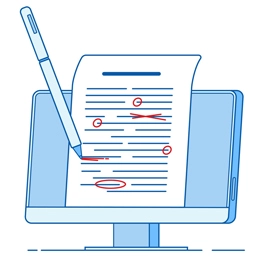
Advancing a discussion
A man who listens because he has nothing to say can hardly be a source of inspiration. The only listening that counts is that of a talker who alternately absorbs and expresses ideas.
– Agnes Repplier
Introduction
One type of interpersonal skill is the ability to start a discussion, and another type is the ability to keep it going. A discussion that is interesting to listen to and productive is one that “flows” and “goes forward.” It is vital to be familiar with several strategies for moving a conversation along, as this will allow you to avoid getting a conversation to stall out. Strategies like as asking for examples, employing repetition, using summary questions, and asking for clarity and completeness will be covered in this lesson as part of our discussion on those techniques.
If you’ve been having trouble keeping a conversation going, it’s possible that it’s affecting both your social life and your professional life. By keeping your ideas and words flowing and maintaining the flow of your discussion, you will be able to prevent awkward times with the help of the following strategies. You will be astonished, once you have learned how to increase this talent, at how many additional doors open in your life to companionship, activities, and fun.
Here are ways to keep a conversation flowing
Open-ended questions are your best friend. When it comes to keeping a conversation going in the right direction, open-ended questions are essential. People are more likely to deliver a genuine and in-depth response when they are prompted with inquiries that begin with “why?,” “how?”, “what?”, “tell me about?”, or “what was it like?”

It’s vital to ask people open-ended questions since they allow you to learn more about the person you’re talking to. You’ll be able to elicit more meaningful responses from people, and the dialogue will provide a foundation for further development. When you want to keep the conversation going and have better dialogues overall, open-ended questions are an absolute must.
Apply the procedure known as “Narrow to Open. “Begin with a straightforward question that can only be answered with a yes or no, sometimes referred to as a limited inquiry, in order to keep the flow and continuity of the conversation going. Then, expanding the conversation with open-ended questions will allow you to build upon the specifics you gleaned from the more narrowly focused queries.
Here is a straightforward illustration:
You: “Do you like to travel?” (Narrow question)
They answered, “Yes!”
You: “Where in the world have you been?” They responded, “Belgium, Italy, and Mexico” to the specific question.
You: “Oh, that sounds really wonderful. How would you describe the weather in Mexico? (Open-ended question)
They said, “I had such a great time! It’s hard to beat the quality of the food, especially the tacos. I’d be delighted to visit again.
You: “That sounds incredible. What else did you get up to while you were in Mexico? (This is an example of an open-ended question) What was just discussed is a fantastic illustration of how you can keep the conversation moving along. Watching someone who employs this strategy in a news interview is the best way to see it in action. You’ll see how they ease into the discussion by asking specific questions, and then how those questions lead to more general inquiries. Their mission is to coax the other person into discussing what they know, what they see, what they think, and how they feel.
Maintain a natural flow to the conversation by including other people. Make careful to include other individuals in the discussion so that the flow of the discourse is maintained. If you are going to ask a question of one individual, make it a point to ask all of the other people as well.
Give people the opportunity to communicate about their experiences, and create an environment where they feel comfortable talking, sharing their ideas, opinions, jokes, and stories. Make the most of this opportunity to meet new people and allow yourself some time to gather your thoughts by taking a break. You will be taken aback when you realize that people will view you as friendly and simple to have a conversation with, simply due to the fact that you gave them room to speak and genuinely listened to what they had to say.
Avoid giving lengthy responses in order to keep the flow of the conversation going. If you talk for longer than twenty seconds at a time during a conversation, people are less inclined to listen to what you have to say. The author of Just Listen, Dr. Mark Goulston, suggests the Traffic Light Rule. According to him, if you keep your statement relevant to the topic and involve the other person, the listener will like you within the first 20 seconds of a conversation. People who talk for longer than a minute and a half are seen as being either monotonous or too chatty.
If you continue to talk for more than twenty seconds, there is a significant probability that the other person will begin to lose interest in either you or the topic because you are just speaking too much. This is due to the fact that you are talking too much.
The majority of folks have the same inquiry. Change your tone and say something else. It should go without saying, but the most of the time, we don’t really say anything that’s all that different from what everyone else does.
The vast majority of us ask the same five questions…
How are you doing?
“Which school did you attend?” is a common inquiry.
“In what city do you reside?”
“What do you do to make a living?”
“What can we expect from the weather over the next few days?”
Isn’t that just dull? Yep. Therefore, try switching things around to keep the flow of the conversation going. Discuss anything that is of interest to you, or at the very least, ask more pertinent questions.
Brief check
Be Interested and you will be Interesting. On the other hand, if you take no interest in anything (except yourself), you will be quite dull and people will not be keen to have any conversations with you.
Maintain the natural flow of the discourse by using these five items:
- Do something you wouldn’t typically do, like read a book or watch a documentary. This will make it easier for you to pull ideas and subjects quickly so that the conversation can continue uninterrupted.
- Being able to speak more than one language is an impressive skill.
- Give a different food a shot.
- Educate yourself about a non-your-own culture. Have you ever heard of the Huli people who live in Papua New Guinea?
- Get out of town and explore a new part of your own city. Get out of your town!
Make use of the activities that you participate in throughout your day as content to keep the conversation moving in an intriguing direction. Discuss your recent travels or any new restaurants that you’ve visited, along with your impressions of the overall experience. And if you know anybody who is fascinating, you should definitely go hang out with that person!
Storytelling is an excellent way to keep the flow of the conversation going. Sometimes preserving the flow of the conversation depends on keeping your listeners interested and involved. What exactly do you mean by that? That means of narrating stories.
On the other hand, there are those who believe that they have to deliver an involved or lengthy tale. You don’t. It may be a straightforward and succinct tale that only takes 20 seconds to tell. The following is a list of things you should and should not do to improve your storytelling talents.
Do: Pick the details that your audience will find most interesting and that will help you keep the flow of the story going.
Determine the message or the tale that you wish to communicate and take into consideration the interests of your audience.
Share tales based on real-life occurrences to which listeners can relate.
Do Not: Assume you don’t have storytelling talents. Everyone has the ability to captivate an audience with compelling narratives.
Make yourself the focal point of the story. It’s not cute to brag about yourself all the time.
Inundate your story with elements that have no place there. This distracts from the primary points being made.
Find other people who share your passions and interests. It is a widely held assumption that if one takes the time to master the appropriate conversational skills, one can carry on a conversation with virtually anyone. This is quite accurate. However, you should keep in mind that not everyone you talk to will have a magical spark or be suitable with you. The key is to seek out situations in which you are confident the people you will meet will share your passions and interests. Because of this, the discussion will flow more smoothly, and it will be much simpler to establish new acquaintances.
You might be amazed at how much simpler it is to have a conversation with folks who share your interests if you can track them down. But you should also always try to challenge yourself to step beyond of your comfort zone. In order to grow, you need to be somewhat comfortable in your own skin. Keep in mind that the aforementioned are tactics that will assist you in practicing discussions and, ultimately, learning how to maintain the flow of a conversation.
Inquire about the particulars by asking a conversation partner for examples is one method to get them to elaborate on what they are sharing with you so that you may better understand it. Examples both offer a general statement that is specific to the situation at hand and provide illustrative information about the particulars of a disclosure. It is also possible to use it to explain the shared concepts or to personalize the experience. The following conversational snippets demonstrate how asking for examples can advance the topic at hand:

Excerpt 1
Person A: C.S. Lewis is, without a doubt, one of my most admired authors of all time.
Person B: C.S. Lewis? His body of work is not something I am familiar with. Could you provide an illustration of one of the things he has done?
Person A: Well, he’s the one who wrote the Narnia books, isn’t he? There are seven books in this children’s book series. It has a tremendously uplifting effect on me.
Excerpt 2
Person A: I’ve heard nothing but good things about this company. They have a genuine concern for their staff members.
Person B: Can you describe the ways in which they care for the staff?
Person A: Well, an excellent example of how they place a priority on both health and safety is the medical aid program that they offer. On their first day of work, all employees of ABC Company are enrolled in a private health insurance plan through a separate company.

Person B. Wow, that is extremely kind of you. In what other ways are they focused on the needs of their employees?
Person A: In addition, the company will pay for all of the expenses associated with an annual week-long retreat that will be held for the staff members.
Keep the conversation going by repeating or following a recurring format or pattern. You can keep a conversation going with more than just questions; there are other potent tools at your disposal as well. You can keep the momentum of your discourse going or push it in a new direction by repeating key words, phrases, or even assertions that a person discloses to you. This can be done in a variety of contexts.
How can you keep a conversation moving forward by using repetition?
The use of repetition is one approach to communicate phrases like “please continue” or “tell me more.” It is a method of indicating to the other person that you have heard what they have said and that either something about their disclosure has caught your attention or you have heard what they have said. They should feel encouraged to elaborate as a result of this.
A conversation can also be focused on an interesting aspect by using repetition in the right way. The other person will get a sense of what you’re interested in hearing more about based on the term, phrase, or statement you choose to repeat and how often you do so. You may turn this tactic to your favour in a number of ways, one of which is by repeating a term, phrase, or remark that you believe contains a significant amount of backstory. You may also zero down on something that you believe the other person enjoys talking about the most or something that you find particularly interesting.
Last but not least, using repetition is a technique that can be used to convey your emotion to what the other person has stated. Your repetition can be infused with feelings of surprise, astonishment, enthusiasm, or perplexity by varying the intonation and pitch of your voice. The samples of a conversation that follow demonstrate how repetition can help a conversation progress are as follows:
Excerpt 1:
Person A: My husband, Mark, and I have been married for the past four decades. Our wedding vows are going to be renewed in April.
Person B: I’ve hit the big 4-0.
Person A confirms this – Amazing, isn’t it? We had some challenges along the way, but we were able to overcome them. We are one of a very small percentage of people who got married about the same period that are still together. I am well aware that I am one of the fortunate ones.
Excerpt 2:
Person A: I don’t think I can take it! The men threw a surprise party for me.
Person B: The guys celebrated your birthday by throwing you a party?
Person A: That’s right! It absolutely brightened up my day.
It is important to keep in mind that when you repeat something, you do not always have to repeat the same exact phase. You are free to make any necessary adjustments to the pattern in order to make it more efficient.
Getting to the meat of the matter by way of a series of questions. An additional method for keeping a conversation moving forward is to periodically summarise what has been talked about or what you have heard from the other person.
A summary might demonstrate that you are actively listening to what the other person is saying and that you have taken everything that they have said into consideration. More than that, it provides the conversation a sense of momentum since summaries indicate that one portion of the conversation has come to an end, and that it is now time to move on to another area of the debate.
It is important to keep in mind that when you repeat something, you do not always have to repeat the same exact phase. You are free to make any necessary adjustments to the pattern in order to make it more efficient.
The following conversational snippets demonstrate how summary questions can advance the topic of discussion:
Excerpt 1:
Person A: I’ve been training pretty hard for this next half marathon. I made some changes to my diet, I got myself a personal trainer, and I’ve been working out for three to four hours every day. I’ve never felt like I was in better form, and I believe that I have a legitimate opportunity to win this!
Person B: You seem to have a lot riding on the outcome of this marathon; do you honestly believe you have a shot at victory?
Person A confirms this. Amazing, isn’t it!
Excerpt 2:
Person A: I want this to be one of the most successful projects we have worked on all during this trimester. A string of misfortune has hit us over the past month, and in order to make up for it all, we require a lengthy respite. The estimates that the accounting department has produced lead me to believe that we are just where we need to be!
Person B: Wow, that’s really impressive! How may I be of service?
Person A: We need someone who is good with design. You have some talent in the arts, right? Can you make us a logo?
Person B: OK, no problem. Just provide me with the specifications that you want, and I will go to work.
Person A: And would you also like a pamphlet? One that contains each of the company’s different colours in some way? The same goes for the emblem!
Person B: No worries at all. Allow me to check if I have your meaning correctly interpreted. You will need a pamphlet as well as a logo that incorporates the company’s colours. Is there truth to this?
Person A: Well, that settles everything. Thanks!
Brief check
Communication is rarely perfect and can fail for a number of reasons. Understanding more about the possible barriers to good communication means that you can be aware of—and reduce the likelihood of—ineffective interpersonal communication and misunderstandings.
Searching for more specificity and clarity. In order to move a conversation ahead in another direction, you can try asking for clarification and making sure everything has been covered. It is essential to check whether or not you have correctly understood a communication and establish whether or not the information you possess is accurate and/or comprehensive. When someone is speaking, they frequently make the assumption that their message has been received, and as a result, they tend to gloss over key facts. They could be under the impression that they share the same frame of reference as the other person, and as a result, they do not feel the need to elaborate on the significance of the words they have made. When we are experiencing strong feelings, such as enthusiasm, our communication may suffer as a result, both in terms of clarity and in terms of being comprehensive.
Your discourse can gain depth and complexity of concept by including questions that seek clarification and completion. In addition to this, it can communicate your genuine interest in comprehending what the other person is saying. The sample from the dialogue that follows exemplifies how asking questions to get clarity and completeness may move a conversation along:
Person A: My daughter, who is just seven years old, has already expressed interest in the performing arts. She has been pleading with me to sign her up for this rigorous community-acting program, but I’m scared that it will turn her into a spoiled brat if she does.
Person B: I don’t understand. What exactly do you mean when you say that it will only spoil her?
Person A: Well, you should know…
I fear that it will give her an excessive amount of freedom. I hope that she will learn self-control by attending school and completing her chores around the house. It is very important to me that she does not follow in the footsteps of many young celebrities of today, who appear to have no idea what is real and what is not.
Person B: I believe I comprehend what you are trying to say. Do you mean to imply that she will miss the typical pressures of regular life, which tend to keep individuals in check?
Person A: That’s exactly right!
There are a number of factors that might lead to difficulty in communicating, including: physical impediments, such as not being able to see or hear the speaker adequately, or language challenges; cultural differences;
Emotional impediments, such as a reluctance to listen to what is being said or to interact with the subject matter; expectations and biases that influence what people see and hear.
There are also situations in which communication is made more challenging, such as when one is forced to have a confrontational discussion with another person, perhaps regarding the quality of their job. These interactions could be prearranged or they could just happen organically.
Emotion and change are two of the most common factors that contribute to making talks more challenging.
Anger, violence, or worry is just a few of the negative emotions that can make it difficult to communicate effectively. When we are having trouble keeping our emotions in check, very few of us are able to speak properly. Therefore, sometimes the best thing that can be done is to postpone the conversation until everyone is able to better regulate their emotions.
Conversations that are difficult to have are frequently about the necessity of change. A good number of us find it challenging to adapt to change, particularly when the transition in question is coupled with an insinuated critique of our current modes of operation.
Practical Application
Jane was meeting Calvin for an interview at their firm. She prepared to ask Calvin questions that do not have definitive answers in order to keep a conversation moving in the appropriate direction. The reason was that she wanted to give him the opportunity to speak his mind about the level of satisfaction Calvin had as an employee at their firm.
Jane decided to use the “open ended questioning” technique and ask questions that begin with “why?,” “how?”, “what?,” “tell me about?,” or “what was it like?” in order to get a genuine and in-depth response.
She was hoping that open-ended questions would enable her to discover more about Calvin’s opinion about the company.
At the meeting, Jane asked about employee satisfaction and benefits. Calvin told her, “This Company is great to work for. They really care about their employees.”
Jane responded, “In what ways do they care for their staff?” Calvin explained, “Our medical program is a good example of how they prioritize health and security. Also, all employees are registered with a private insurance firm from their first day at work,”
Jane was impressed. “Wow, that’s very generous. Are there other ways they’re employee-oriented?” Calvin went further, saying, “All staff members are also scheduled an annual week-long retreat, with all expenses paid for by the company.”
Jane was happy that she was able to elicit reactions from Calvin that were significant, and the conversation give a basis for further development. Jane realized the importance of open-ended inquiries especially if you want to keep the conversation moving and have better dialogues overall.





